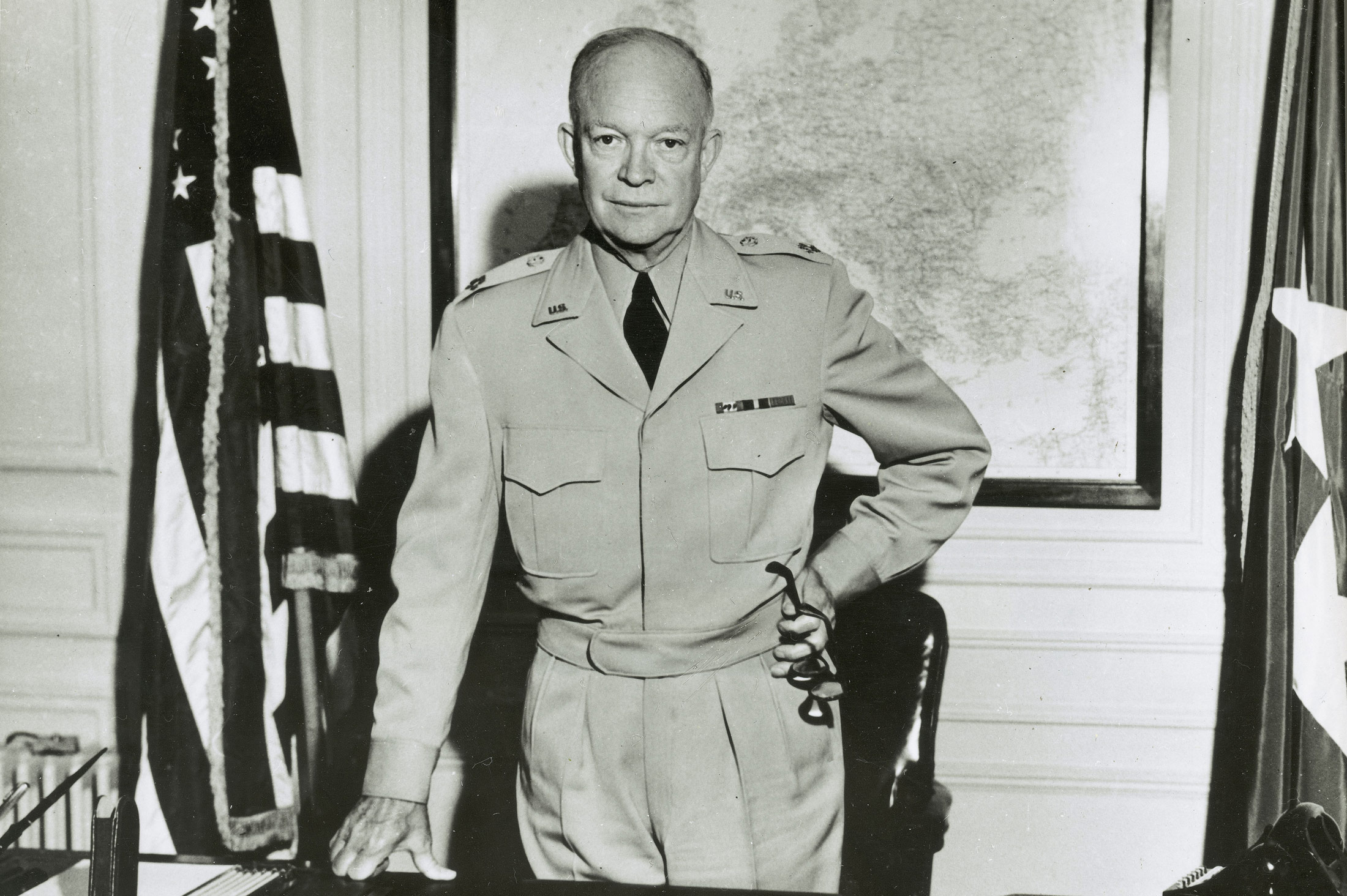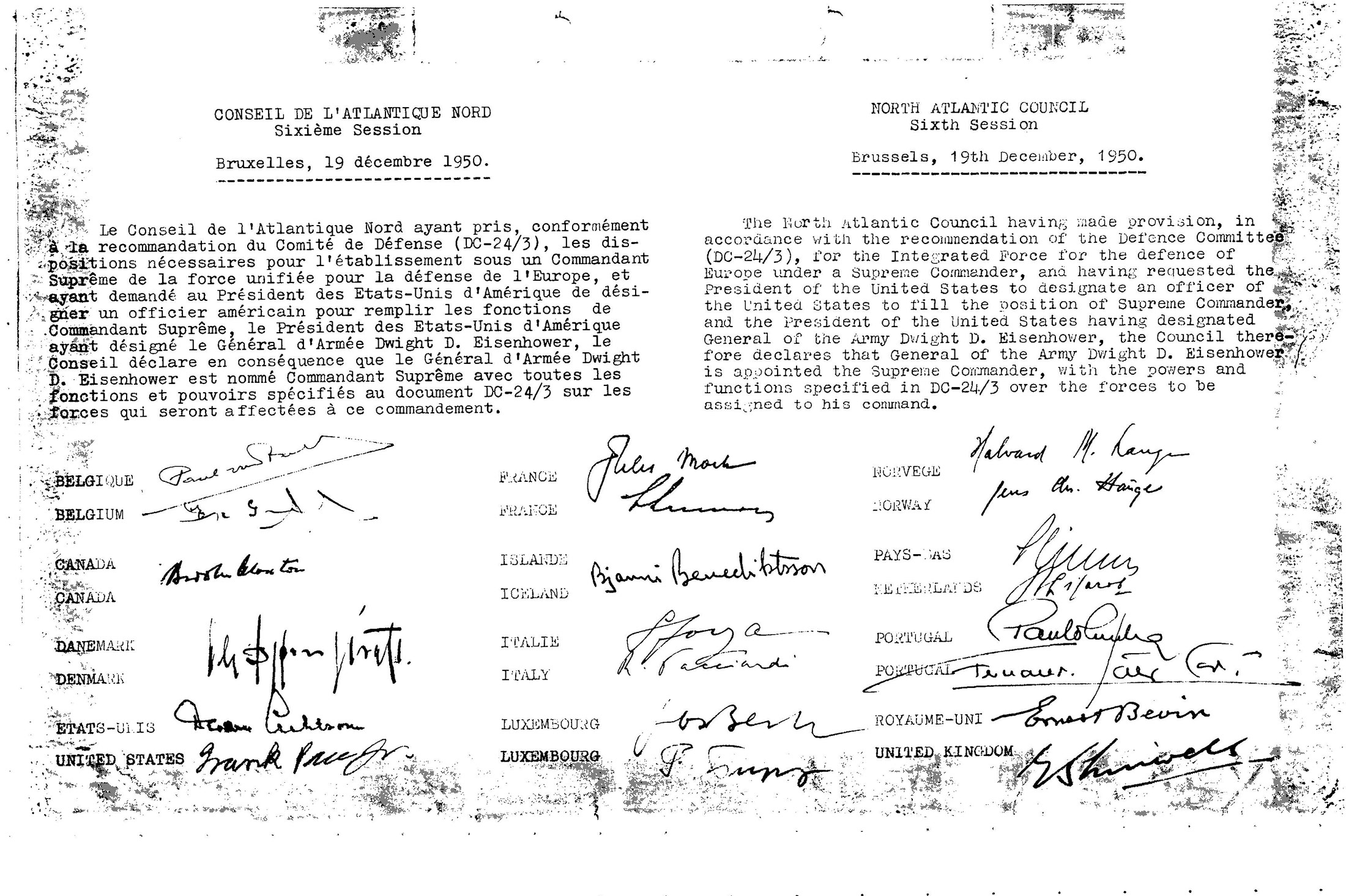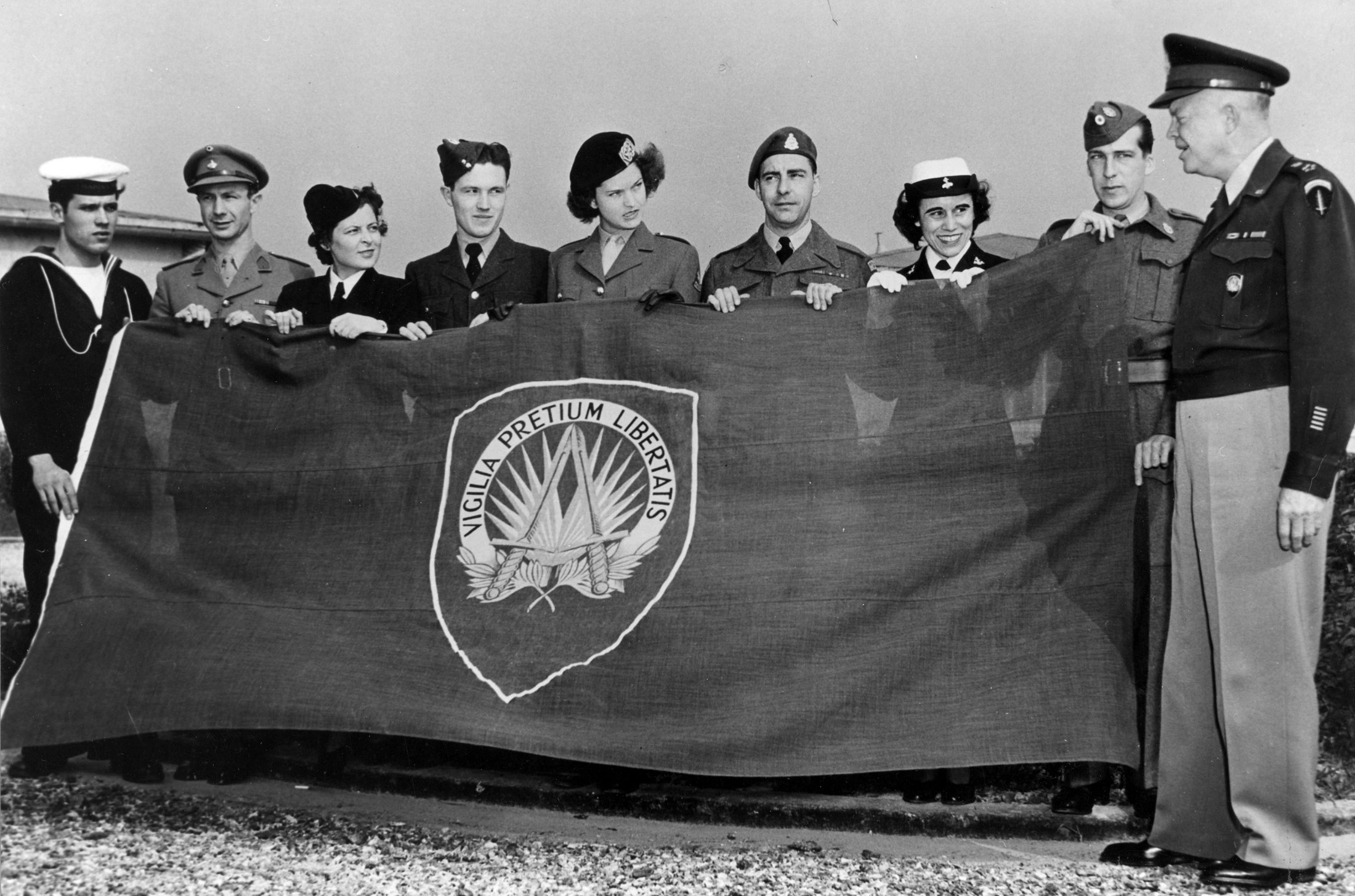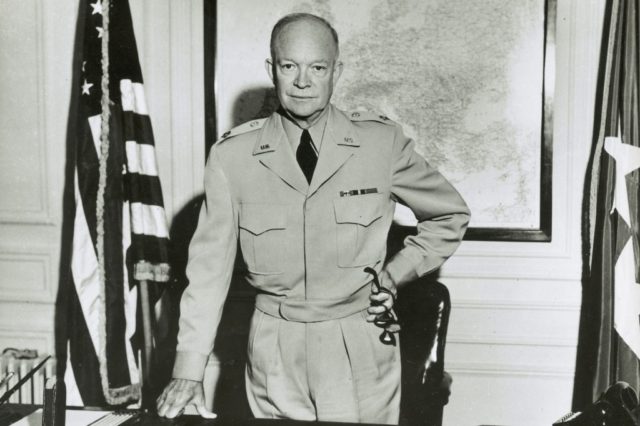In all history, this is the first time that an allied headquarters has been set up in peace, to preserve the peace and not to wage war.

American General Dwight D. (Ike) Eisenhower was named Supreme Commander Allied Forces Europe (SACEUR) in December 1950.
In NATO’s earliest days, those who had won the war were given the task of securing the peace. Eisenhower was the accomplished general who led the Allied army during World War II. Perhaps only with Churchill did he share the status of being a symbol of the 1945 victory.
The post of SACEUR was established before the position of Secretary General given that NATO’s first years were dominated by military affairs. The Korean War highlighted the need for military coordination and was the principle catalyst for organisational development. The United States put forward Eisenhower’s name as the man for the task of organizing an integrated NATO force and ensuring the defence of Europe.
A distinguished military record, combined with his good working relations with many of the European leaders, made Eisenhower the ideal choice for the position of SACEUR. Eisenhower considered it the most important military job in the world and took a leave of absence as President of Columbia University to head the fledging Alliance.
Eisenhower was keenly aware of the rather unique position that he was in as the first SACEUR and indeed NATO’s only leader until Lord Ismay was appointed Secretary General in April 1952. He felt that unity as a key guiding principle should start with his staff. He insisted that officers could not represent their national ministries while appointed to SHAPE staff positions. Later, this principle also became a key requirement for civilian International Staff appointments at Headquarters.

Eisenhower set about on a tour of the European capitals in January 1951 to raise morale and convince the war weary countries that bolstering their defenses was necessary. It was not an easy task. The Europeans felt that the NATO Treaty ensured that the USA would not desert them. They deemed the threat of the American atomic bomb enough to deter the Soviet Union. Therefore, it was not necessary to build up European ground strength as it would do nothing in the face of atomic war and would only provoke the Soviets.
Following the tour, Eisenhower spoke to the American Congress in which he convinced the USA that it was not going to be solely responsible for defending Europe nor would it cost an excessive amount of money or troops to do so. Europe would feel more confident in the rearmament process if the USA would reciprocally put forward its commitments. The speech was deemed a tremendous success. Former critics of NATO in the American government said that they had been persuaded. Shortly after, Congress approved the dispatch of four divisions. Subordinate Allied commands were set up in three key geographical areas – North, Centre, and South. https://www.youtube.com/embed/6YHcNWBAH5Q?enablejsapi=1&origin=https%3A%2F%2Fwww.nato.int
Eisenhower on SHAPE
Throughout his tenure, Eisenhower carried out extensive correspondence with American politicians, businessmen, and publishers in addition to European leaders. Eisenhower believed that building support for NATO was the key objective and carried out frequent trips to capitals, meeting not just with politicians but also civil society, academics, trade union leaders etc. Many of the incoming letters from the United States urged him to run for the presidency but his response was always to ask the sender to spread the word about NATO: only collective security could help the United States and Europe deal with the Soviet Union.

Eisenhower was keenly aware the January 1952 meeting of the North Atlantic Council in Lisbon was the critical turning point in his endeavours. He deemed it a success as the Council set ambitious force goals (although they fell short of what Eisenhower himself set), approved the contribution of West German divisions, and welcomed Greece and Turkey as new members of NATO. Morale was at much higher levels than one year previous. Eisenhower had managed to rather successfully promote the idea that free men must and can defend themselves against their adversaries.
Considering his job complete of laying the groundwork for what has proven to be an ending political military alliance, Eisenhower stepped down as SACEUR on 31 May 1952 to launch his successful campaign for the American presidency. (Source: NATO)
